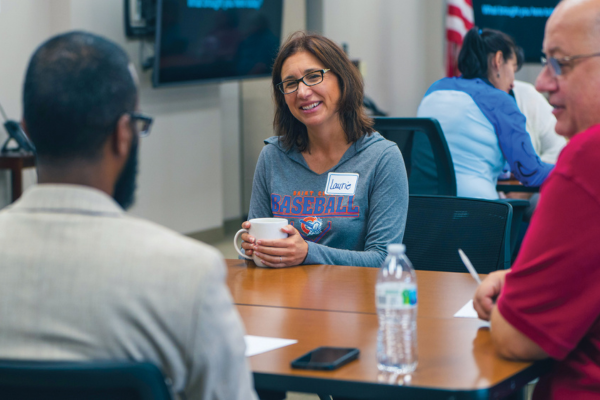Nimble, Resilient, Resonant Leaders for Equity
June 01, 2023
Effective professional learning delivers emerging innovative practices for those at the forefront of schools and districts
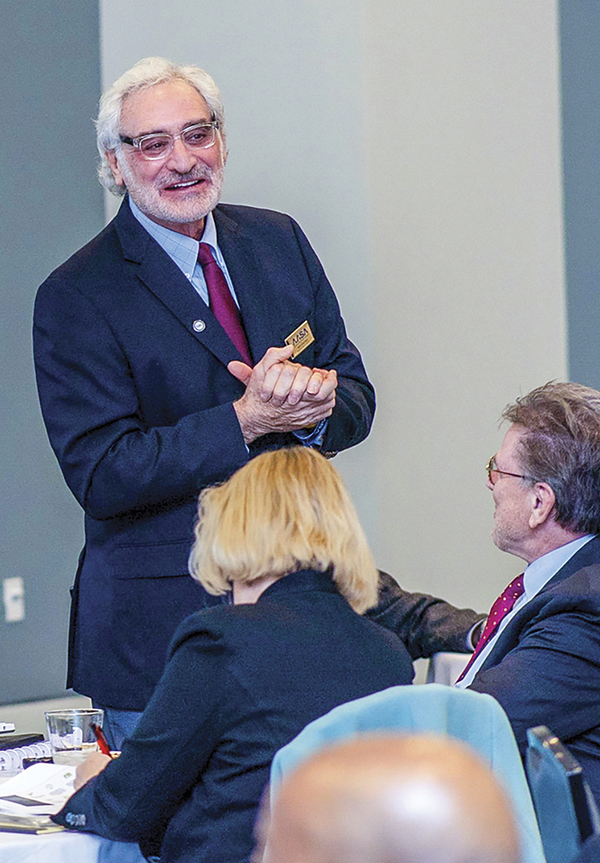
A gentle nod, a stern word or expert advice from someone we respect are all part of becoming effective leaders. In fact, professional learning takes place throughout our lives — from sources near and dear to us to those who might be held as esteemed, experienced and sometimes even distant.
No one-size-fits-all model exists for effective professional learning among educational leaders, yet we can identify some universal elements. Perhaps most importantly, we learn from each other as we reinforce our capacity for demonstrating the commitment to serving every student.
Professional learning should not be a “sit-and-git” model nor should our learning be based on archival folk wisdom. Research, common sense and practical experience inform how we can best serve all students and school communities. We learn, grow and take action as educational leaders, with the exhilarating and sometimes exhausting understanding that we are the key authors of what works.
Evolving research reveals that nimble, resilient and resonant leaders find the necessary focus for their work.
Leading for equity is a national priority. As an essential part of sustained and effective leadership learning, a focus on equity should include support for leaders to understand, apply and model equity-driven strategies and processes. These include techniques for supporting student efficacy and belonging, addressing areas of underachievement and ensuring all students’ capacity for entering and succeeding in coursework and programs required for success in the 21st century.
Considering the ongoing evident and research-documented scourge of national, regional and local underachievement by underrepresented subgroups, education leaders must model staff techniques, strategies and dispositions needed for open and honest dialogue: How are we doing in educating all our students? What are we doing to address underachievement in core areas? How can we minimize the effects of unconscious bias among members of our learning community?
Sustained, Holistic Learning
Philip Martell, superintendent of the River Valley School District in western Pennsylvania, is like many of the leaders who are part of the AASA Leadership Network. Martell reinforces the importance of professional development at all levels of his rural, 1,500-student system.
Martell describes it this way: “If professional learning opportunities are aligned to the district’s mission, vision, goals and priorities, and data are effectively analyzed to monitor the utilization of evidence-based strategies that meet individual student needs, then students will be exposed to opportunities that lead to increased academic achievement, diversified career choices and the opportunity to be successful in future life tasks.”
Education leaders like Martell are most effective when they are lifelong learners themselves. Working closely with their boards of education and administrative colleagues, they serve as the chief learners in their districts. They need to model for staff, students, families and their community the importance of continuous growth and development as a cornerstone for promoting student achievement and equity. Such leaders are committed to growing and improving their skills, dispositions and habits of mind to sustain an organizational culture in which all have voice, value and efficacy.
To support this priority, the AASA Leadership Network provides a range of professional learning opportunities tied to these core principles. In alignment with the Professional Standards for Educational Leadership, we support district leaders as they move along a professional learning continuum from their early careers to the point where they too can serve as mentors and coaches.
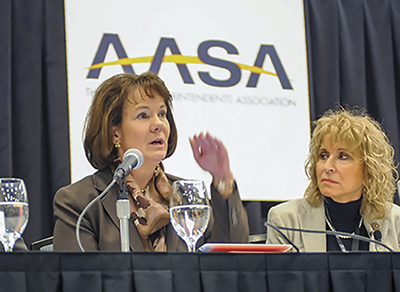
Equity-driven and sustained leadership development reflects a key set of unifying principles and core values, including (1) integrating the power of collaboration as communities of practice committed to investigating and resolving identified problems of practice; (2) sharing and addressing staff insights and concerns; (3) reinforcing continuous learning, with leaders modeling their commitment to their own professional learning and growth; and (4) addressing the participant as a whole learner, including their social, emotional and ethical growth and development.
Reinforcing Best Practices
As leaders prepare students for an uncertain, rapidly changing and highly complex world, we know that professional learning must reflect the emerging research and practical application of what we are learning about effective and successful leaders. Leaders must receive support to understand the importance of resiliency and nimbleness to lead within ambiguous or unpredictable conditions.
Emerging research by Hanover Research reinforces key attributes of leadership, underscoring that today’s leaders must be resilient, nimble and resonant. (See related story, below.) This research helps to create new models of leadership that are a remarkable match to attributes of equity. Resilient leaders are uniquely positioned to champion growth for all students by strengthening and supporting teachers and other education leaders as they hone their professional skills and dispositions.
The resonance and resilience of leadership through the lens of equity creates a culture where not only the leaders but all who serve learners support individual and collective respect and responsibility for oneself and for others.
Effective leadership is ethical leadership, which understands and acts to create safe and engaging learning environments for each learner. Current and future leaders are challenged to engage in ongoing self-reflection about their core values, mission and vision for education.
Transformation in Action
All of these controlling principles are present in the AASA Learning 2025 Lighthouse Systems, which are considered examples of effective professional and organizational transformation in action.
Mehlville School District in suburban St. Louis, Mo., is highly intentional in its focus on personalized student preparation, multiple student pathways, a sustained focus on equitable opportunities for all learners, employee support and efficient systems. Similarly, the Shaler Area School District near Pittsburgh, Pa., reinforces student preparation for 21st-century experiences and career pathways.
“Our programming and staff mindset are inclusive,” Sean Aiken, Shaler’s superintendent, says. “We instill in our students the need for self-advocacy and celebrating differences. Professional development is essential and ongoing.”
Another Lighthouse designee from Northgate School District in Pittsburgh emphasizes the power of the whole learner model, including a focus on a continuum of learning, personalized learning, social-emotional development and the need for a comprehensive Multi-Tiered System of Support. Northgate’s superintendent, Caroline Johns, stresses that “students tell us there is a strong sense of community within our district that allows them to feel like they belong. Students are able to develop into well-rounded individuals.”
Emphasis on Networking
Techniques for reinforcing this kind of supportive and engaging learning environment are an essential part of professional learning in Northgate. All of these Lighthouse Systems reinforce professional learning for staff aligned with local and state frameworks emphasizing future-ready student learning.
In California’s San Ramon Unified School District, major focus is on promoting understanding of key strategies related to social-emotional-academic learning.
“We utilize our strategic directions framework to implement actionable steps, advance our goals and broaden the definition of success for all our students,” says superintendent John Malloy, noting that staff members receive sustained support in analyzing and using student performance data to monitor progress and make adjustments as needed.
Similarly, the Fox Chapel Area School District, northwest of Pittsburgh, includes sustained professional learning and data analysis involving students’ social-emotional learning. It includes evaluation of the impact of programs and services involving emotional management, problem solving and self-regulation.
All AASA Learning 2025 Lighthouse Systems emphasize the power of collaboration, networking and cross-institutional support. The College Community School District in Cedar Rapids, Iowa, offers extensive outreach to all families, collaborative partnership opportunities and efforts to cultivate the concept of parents as teachers. District staff also provide families with practical strategies, information and support.
The Mineola Union Free School District on New York’s Long Island also stresses the power of building learning continuity, including early learning. It takes a distinctive approach, using a badging system to ensure every learner is an advocate for and partner in their own learning process.
Synergy Across Lines
Collaboration in the Lighthouse Systems extends synergy and networking across district and state lines. The Collegiate Edu-Nation is a statewide network in Texas that facilitates rural student achievement and rural workforce development to prepare future-ready learners. The organization partners with 12 local school districts as well as community and business leaders to support P-20 educational systems.
The Collegiate Edu-Nation acts as an intermediary by connecting member school districts with training and resources in capacity building, intentional service supports, statewide networking, professional learning and continuous improvement systems.
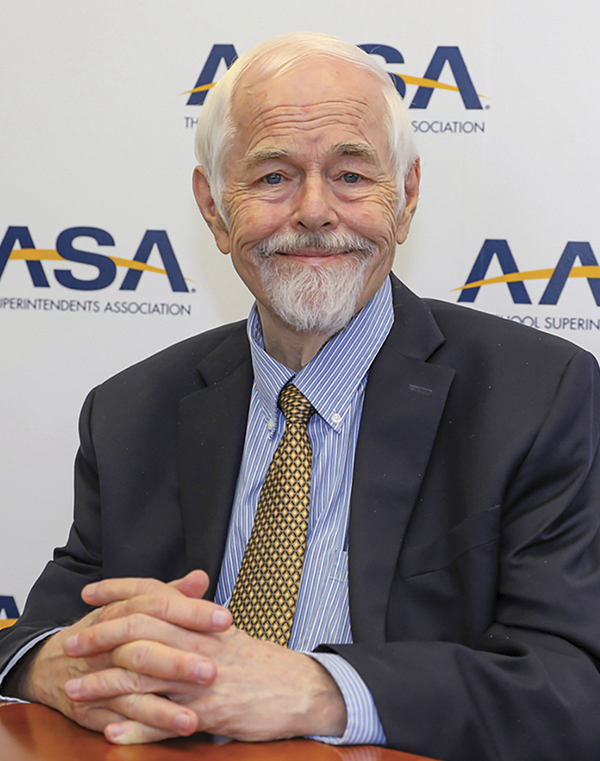
Artist Pablo Picasso once said: “I am always doing that which I cannot do, in order that I may learn how to do it.” In these tumultuous times, the core principles of leadership development evident in the ideas and work of these AASA Lighthouse Systems reflect Picasso’s point of view. We are engaged in the continuous process of moving and improving education as we know it — and that process must begin with us as lifelong learners who are discovering what the new educational, cultural, political and economic landscape demands of us, and most importantly, what this and every generation of students deserves of us.
One of us (Sherman) likes to tell the story about studying one summer with John Goodlad at the University of Washington, just after A Place Called School was published in 1983. By that time, Goodlad had written extensively of the need for change, having visited over 110,000 classrooms with his team of researchers. He often wondered what decade he was in as he observed those classes, still with lined-up desks and locked-down minds.
He asked Goodlad how he could still be writing after all those years and all those classrooms. The author’s answer: “I’ll keep writing until someone listens!”
Our belief is that through AASA Learning 2025 and the extraordinary dedication of our school district teams, we have found the right audience for the transformation of educational leaders’ professional growth and development. Goodlad would be pleased to see our work.
Mort Sherman is AASA senior associate executive director. Valerie Truesdale is AASA assistant executive director. John Brown is AASA Learning Network consultant.
BY LUPITA LEY HIGHTOWER
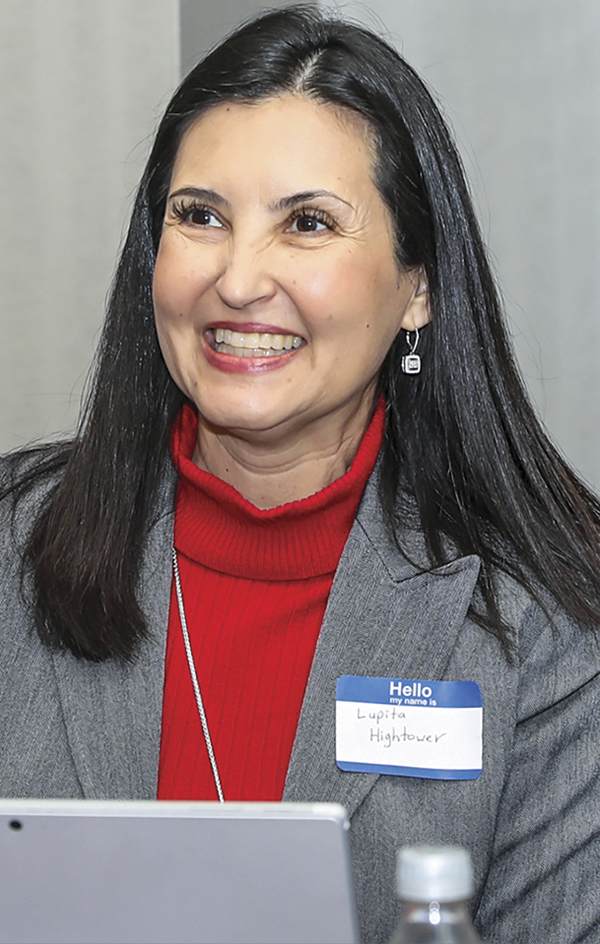
As a young professional, I didn’t realize the importance of professional networking. With two young children at home, I found myself asking my husband if it was really all that important to attend such events. I was truly content just getting home to our family and settling in for the evening after a rewarding day at school.
Fortunately, I quickly learned the importance of professional networking from a valuable mentor and friend. Beyond serving me personally, learning the value of professional networking also helped me better serve students, families and teachers by enabling me to broaden my influence over matters that impact public education.
Encouragement along the way from mentors to “cross the aisle” to influence, educate and inform those who can positively impact the community I serve did not sink in right away. Yet from them I learned that it is just as important or even more important to network with those who don’t share the same beliefs and understanding. This mentoring lesson helps me build bridges to support my community and my professional development.
Rewarding Connections
I have found so many ways to build a strong professional network. From social media, particularly LinkedIn, to professional associations and conferences, employee resource groups, committees, task forces, volunteering and service on nonprofit boards and alumni associations, these are all opportunities to set our intentions and broaden our network.
I hear people say they would rather focus on their work, not forfeit time to such events. Yet data support the importance of networking, which is an important part of our work in school system leadership. It is rewarding to meet new people and learn and grow from them.
My involvement in Arizona School Administrators and AASA has contributed to some of the most engaging and valuable opportunities in my professional career. As a co-teacher in the Aspiring Superintendents Academy for Latina/o Leaders and a mentor partner for the National Superintendent Certification Program (West Coast), I have learned a great deal.
I often read how women tend to undersell their strengths and values and encounter barriers that keep us from high-powered professional networking. Yet the key to networking is to move beyond our comfort zone and network with those who may or may not be like-minded and can support our growth and ability to lead and positively impact our communities. Think of networking as (1) learning from others, (2) building bridges and alliances, (3) expanding our supports, (4) promoting our constituents and (5) influencing actions that can promote public education and ultimately support our students and staff. Is networking just for men? Absolutely not! Networking is for anyone who wants to effectively build their career, expand their support group, expand their opportunities, lead their communities and grow personally and professionally. It is worth the time and energy.
A Learned Skill
If you can build a relationship, you can be a good networker. It is all about cultivating relationships through authenticity, good listening, positivity, support, sincerity and trustworthiness. Keeping in mind that networking is a relationship where both parties benefit enables us to use the art of questioning as our strongest skill set. Consider it your superpower.
I learned this superpower concept from a friend who discovered as an adult he was really an introvert and hated the idea of walking into a room full of strangers to network. Yet when he learned his superpower was engaging others through kind, sincere questioning, he learned he could walk into any room with confidence, intention and questions.
Whether you are an introvert or extrovert and no matter your ethnicity, gender, age, level of experience, it doesn’t matter because networking is for everybody.
Lupita Ley Hightower is superintendent of Tolleson Elementary School District in Phoenix, Ariz. @LupitaHightower
BY ANNE SPEAR
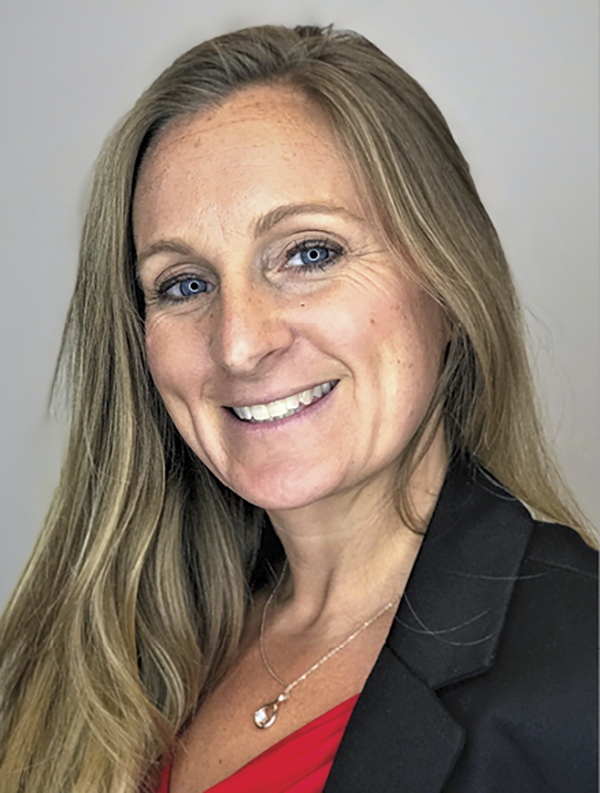
The past few years have pointed to the important role of resiliency among school district leaders and school organizations as they have endured extreme adversity and trauma.
AASA recently partnered with Hanover Research to conduct research on the role of resiliency in leadership and culture, leading to findings that may help district leaders build their own resiliency and cultivate resilient structures within their organization and community.
Our research made these important points:
Resilience differs from other concepts such as self-efficacy and perseverance. While all fall within the family of positive psychology, they capture separate elements of behavior and response.
Protective factors, which impact an individual’s resilience development and their response to adversity, vary by type and form. They can include biological, psychological and dispositional attributes; social supports; and attributes of social systems (e.g., family, school, friends and community). Some of the factors can be controlled and developed by leaders to create resilient leaders.
Leaders who possess resilience move through challenges and adversity while maintaining their own well-being and the well-being of their organization.
Resilience can protect students from the negative developmental and psychological impacts of trauma and positively impact students’ academic achievement, participation and self-esteem.
Self-Assessment Questions
When examining the resilience in your own organization, we suggest using the Ecological Framework of Resilience, which examines how much stress and disturbance a system or organization can endure through a crisis. The model includes these aspects:
The speed by which you can recover to equilibrium after a disruption. How resilient are the school system’s structures to absorb change in a crisis?
The magnitude of disturbance you can absorb or resist. How do you react when your community creates a petition against the reading curriculum?
The ability to manage and accommodate change by adapting key functions and processes. How do you vary key functions to ensure the district has the capacity to adapt?
Anne Spear is a senior adviser at Hanover Research in Arlington, Va. Leila Nuland and Joy Gitter of Hanover Research contributed to this article.
BY AVIS WILLIAMS
.jpg?sfvrsn=3a25159f_3)
By all accounts, being an educator has become more challenging than ever over the last three years. I always have believed that being a principal is the most rewarding, important and, yes, challenging position in our profession. It’s a space where finding joy presents some challenges.
It is not only possible, it’s imperative that principals and superintendents understand the value of leading with joy. Why? Joy is happiness that is not dependent upon what happens in the moment. Research indicates happy employees are more passionate, collaborative and enthusiastic. These traits lead to higher levels of commitment toward the work of K-12 education.
Commitment extends beyond the typical buy-in that leaders seek, leading to team members who are dedicated to improving outcomes for both children and adults. It all starts with joy.
Transforming the Culture
When I began my tenure as superintendent in Selma, Ala., in 2017, the district was under four years of state intervention due to poor governance. Morale was low, and the school district’s culture was toxic. In a survey, 70 percent of district employees said they did not feel valued and nearly as many did not feel safe.
Most concerning, student academic outcomes were deplorable, including two schools on the state’s failing schools list for being in the bottom 6 percent for reading and math proficiency. A change was needed. That change was undergirded by leading with joy, coaching and supporting principals so they could better support their teachers.
We used our Principal PLC Framework, centered on the use of the inquiry cycle. Focused on instructional leadership, we started each meeting with positive affirmations and ended with an optimistic close. We discussed our celebrations and innovative practices that were worth replicating. I led the principals of secondary schools, including R.B. Hudson STEAM Academy. Hudson spent nearly a decade on the failing schools list and for years suffered from the problems of teacher turnover. Student discipline referrals were among the highest in the district.
Based on the most recent data, the school is now off the list. Student proficiency has improved by two letter grades in three years, and 100 percent of the students experienced growth. Cicely Curtis, who served as the principal for the last three years until being promoted to a district-level position, says: “It was very clear to me that a strong and positive school culture had to be a top priority. We needed a happy environment where our scholars and teachers felt supported and [seen].”
With that goal in mind, she along with our other school and district leaders set out to change the narrative. “Our objective was to uproot years of defeat from being on this list,” Curtis says. “We were intentional about the words we spoke … . [O]ur day started with daily affirmations and celebrations.”
The improved outcomes at schools enabled the district to move from state intervention to being recognized by the Alabama Performance Excellence Program (based on the Baldrige Framework) with the Tier II award, a feat that no other school district attained in the state. Further, 90 percent of employees said they believed the district was moving in the right direction. The transformation was intentional and possible due to healthy partnerships between principals and district leaders.
Finding Your Joy
For me, finding joy meant connecting regularly to my “why” and spending time with students to reinforce it. Second, it required understanding that joy is not perpetual happiness. If we are not careful, it can look like toxic positivity where we lose sight of the challenges and trauma that many team members and families experience.
Finally, joyful leadership required a relentless focus on self-compassion and wellness. This was about owning that we are human and have needs that must be met for us to be effective. You can’t give what you don’t have.
In my current role as superintendent in New Orleans, I shared my core values through my entry plan: equity, excellence and joy. With a focus on addressing mental health, community gun violence and trauma, I lean into each of these values in every aspect of my work. I look forward to my journey here as I support schools to improve student outcomes through joyful leadership.
Avis Williams is superintendent of the NOLA Public Schools in New Orleans, La.@DrAvisW
Additional Resources
The authors suggest these informational resources relating to the subject of their article.
- A Place Called School by John I. Goodlad, McGraw-Hill, 2004.
- Deep Learning: Engage the World Change the World by Michael Fullan, Joanne Quinn and Joanne McEachen, Corwin, 2017.
- Everyone Wins! The Evidence for Family-School Partnerships & Implications for Practice by Karen L. Mapp, Anne T. Henderson, Stephany Cuevas, Martha C. Franco and Suzanna Ewert, Scholastic, 2022.
- Getting Ideas into Action: Building Networked Improvement Communities in Education by Anthony S. Byrk, Louis M. Gomez and Alicia Grunow, Carnegie Perspectives. (Essay originally published in Frontiers in Sociology of Education, July 2011.)
- Leading Social-Emotional Learning in Districts & Schools: A Handbook for Superintendents and Other District Leaders by Daniel A. Domenech, Morton Sherman and John L. Brown, Rowman & Littlefield, 2022.
- “How School Leaders Can Support Effective Professional Development” by Angela Di Michele Lalor and Charles Sperrazza, Edutopia, Sept. 22, 2022.
Advertisement
Advertisement
Advertisement
Advertisement

